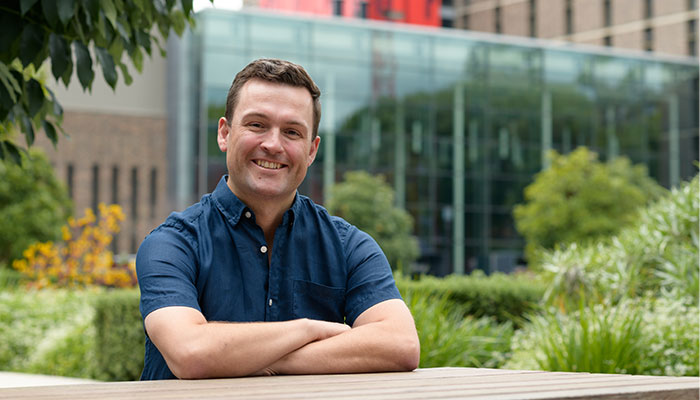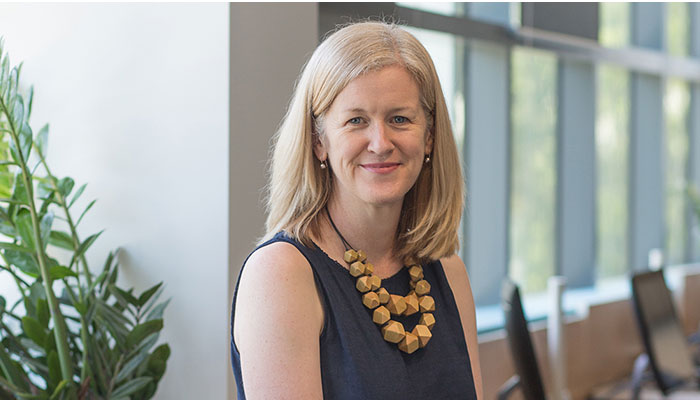Teacher: Charanya Ramakrishnan (pictured) is an IT lecturer in the School of Computing, Faculty of Science and Engineering, where her specialist subjects are database design, mobile app development and applications design and development, which embrace data storage, information systems and programming.

Groundwork: Charanya has a Bachelor of Technology (BTech), Information Technology, from the Sathyabama Institute of Science and Technology in Chennai, India, and master’s degrees in Information Technology from both Macquarie University and the University of Technology, Sydney. Landing a tutor position at Macquarie in 2011 “changed everything for me”, she says. “I didn’t know how much I enjoyed teaching until that point.”
Gold star: Highly recommended in the Vice Chancellor’s student-nominated Learning and Teaching Awards in 2020, sessional staff Learning and Teaching Awards in 2019.
What students say about her: Approachable, relevant, engaging, goes above and beyond.
What Charanya says:
At the heart of my teaching are my students. For me, it’s all about the Eureka moments, that sense of accomplishment and wide-eyed excitement in them when you see they have understood that tiny thing which could essentially hold their future.
Today, we are teaching subjects that barely existed a decade ago. We didn't have mobile app development or talk about user-interface and user-experiences (UX). Now, this is a complete branch of science. And you can’t teach psychology without touching on cyber-bullying or how the web affects people’s health and wellbeing.
It’s important to use materials and teaching tools that are not obsolete. Mention an album, a CD, a track, or a floppy disc to students and they don’t know what you’re talking about. Yet 98 per cent of students know what Netflix or Discord is. For years everyone was watching Game of Thrones so I’d write my examples around, say, a particular season. We’d design databases based on kings and killings! Now, we do that around other popular Netflix series or movies.
When you talk to students at their level, they get the concept right away. It's instantaneous – you don't have to try so hard to break down complex concepts.
Introducing cutting-edge technologies motivates students to learn. We are the first university to teach React Native, a JavaScript framework for writing real, natively rendering mobile applications for iOS and Android. We thought, "Let's work on something none of the other Australian universities have done". A pattern we noticed in other universities was that they tried to use their existing resources to run advanced units. For us, it is all about what can get Macquarie students an edge when it comes to their résumé.
Everything a student learns should be part of their résumé work. They should know why they're learning it and how it's going to be useful. Technology changes so fast; you need to keep on top of it. Last semester one of our students used a mobile app design tool called Figma for a mobile app design assignment which she took along to a job interview. The interviewer didn’t know the technology and asked questions about it and the student was able to explain how the tool works. She got the job.
I am not a bullet-point kind of teacher. I feel they restrict learning; some students simply never look for anything outside the power points that are being offered. If they don't understand anything, I will give them reference links to, for example, a chapter from a book or something in the Macquarie library whose resources are phenomenal.
What I love about teaching is understanding why students don’t understand things!
I also like visual learning approaches because I think they stick. This semester I was tasked to teach programming. Visual learning approaches are the best. Using props makes it so much better. I used paper cups to show them how the computer uses slots to store values. We will name the cup and use a sticky note to put a value in it. Makes the class go wild with engagement since students do love to connect with the learning environment.
What I love about teaching is understanding why students don’t understand things! I see it as my responsibility to make students understand. Sure, their listening and concentration matters. But I’m interested in why they get confused. What could I have done better? My curiosity is around what made them ask that question.
The most challenging part about teaching online in 2020/2021 was engagement. In a face-to-face class you can hand around a print-out that forces students to put away their mobile phones and write for two hours. Now, with Covid, and attendance over 300 students, we need a webinar format. To keep them engaged I am making mini videos – 10 five-minute videos delivered a week ahead of lectures that have been trimmed back to one hour. They’re labelled like a YouTube playlist and have been a big hit: 600 to 700 clicks just before an assignment is due.
Another benefit of Covid for students which we might carry on with are rostered online consultations through late evening hours. We realised many overseas students in different time zones can’t come off mute because they’ll wake or disturb their families.
The chat function on Zoom has introduced a new lexicon! And the freedom for students to ask many more questions than would be asked in a lecture theatre. Often in the language of the day as students chat amongst themselves during a lecture! I’m now right back at them with POG (play of the game), Gucci (good), sadge (sad), POG Champ (an awesome person). Again this is all about connecting with students to help them learn better.
I would like my students to view me as … the teacher who steered them towards a career in IT.



